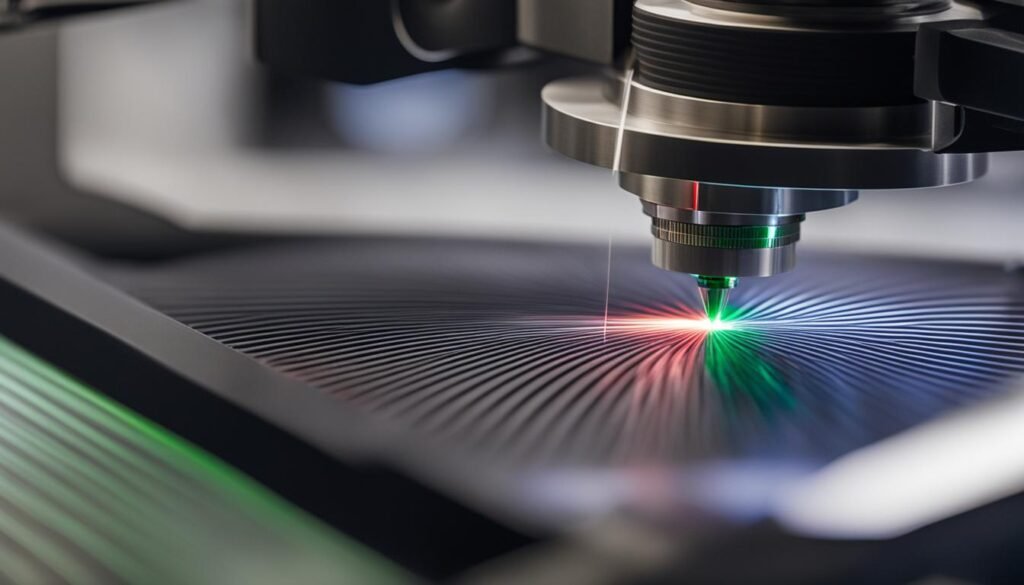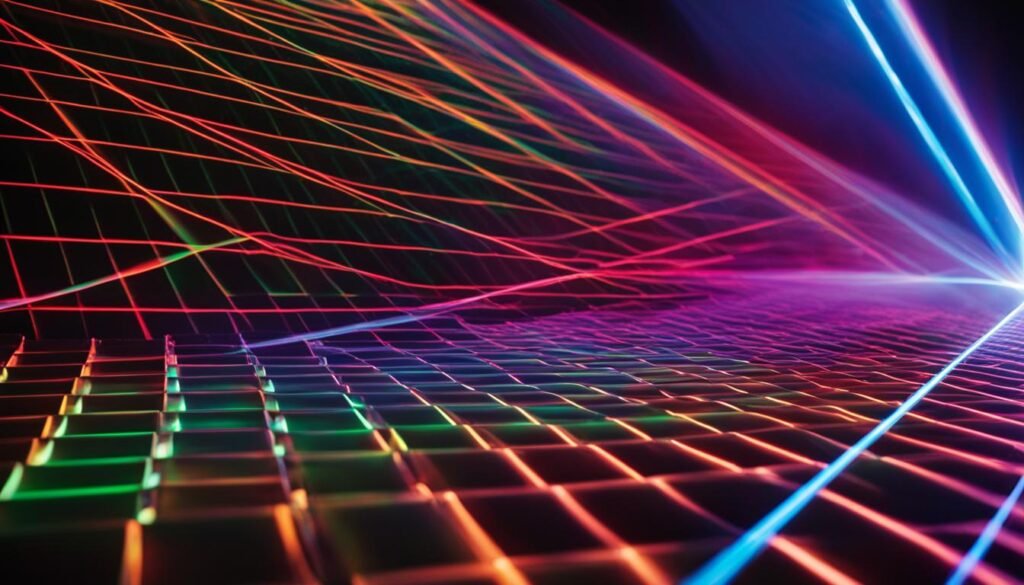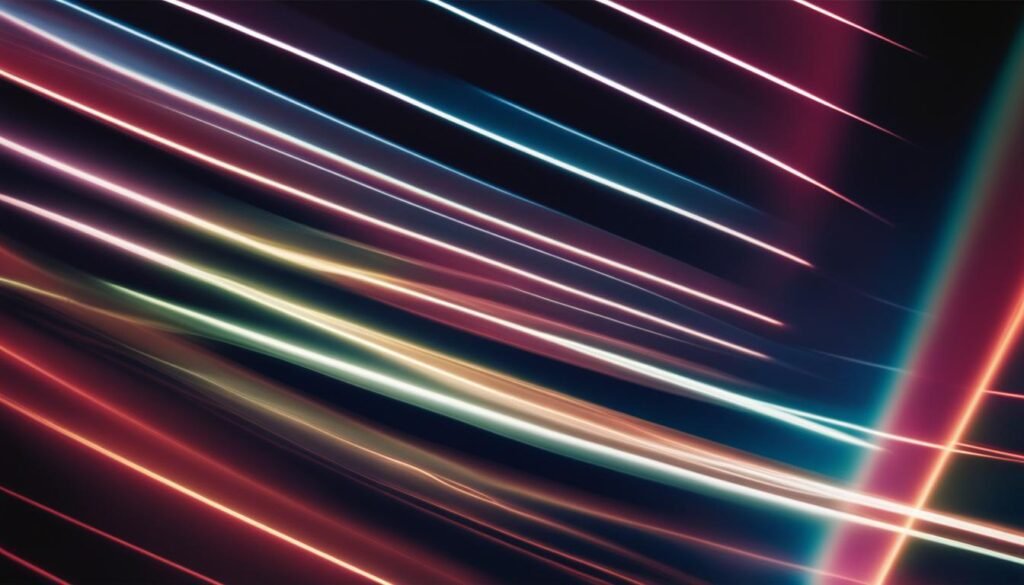Laser-induced grating spectroscopy (LIGS) is a powerful technique used for gas phase diagnostics, providing valuable insights into the thermodynamic properties of the medium being studied. By understanding the principles and applications of laser-induced gratings, researchers and practitioners can unlock a wealth of information about temperature, thermal diffusivity, and species concentrations in a non-intrusive manner.
Contents
- 1 Principles of Laser-Induced Grating Spectroscopy
- 2 Applications of Laser-Induced Gratings
- 3 Experimental Techniques for Laser-Induced Grating Spectroscopy
- 4 Recent Advances in Laser-Induced Grating Spectroscopy
- 5 Conclusion
- 6 FAQ
- 6.1 What is laser-induced grating spectroscopy?
- 6.2 How does laser-induced grating spectroscopy work?
- 6.3 What are the applications of laser-induced gratings?
- 6.4 What experimental techniques are used for laser-induced grating spectroscopy?
- 6.5 What are the recent advances in laser-induced grating spectroscopy?
- 7 Source Links
Key Takeaways:
- Laser-induced gratings offer a non-intrusive method for studying complex gas dynamics.
- LIGS can be applied in various fields, including combustion, aero-acoustics, and plasma physics.
- The technique relies on the generation and detection of gratings in the medium of interest.
- Several experimental techniques can be used for laser-induced grating spectroscopy.
- Recent advances in laser technology have expanded the capabilities of LIGS in measuring unsteady phenomena.
Principles of Laser-Induced Grating Spectroscopy
Laser-induced grating spectroscopy is a powerful technique that relies on the generation and detection of gratings in the medium of interest. These gratings are formed through the thermalization of absorbed laser radiation or through electrostriction. When the laser beams interact with the medium, they create modulations in the refractive index and density, resulting in the formation of the grating.
The interaction between a probe beam and the grating leads to diffraction, which can be detected and analyzed to extract valuable information about the properties of the medium. One of the key parameters that can be measured using laser-induced gratings is the local speed of sound. By analyzing the frequency of the grating oscillations, researchers can derive measurements of the speed of sound, which in turn allows for the determination of temperature and other thermodynamic properties.
Laser-induced grating spectroscopy has numerous applications across different fields. In combustion studies, this technique can provide insights into temperature variations, helping optimize engine efficiency and reduce pollutant emissions. It is also used in aero-acoustics, plasma physics, and species concentration measurements. With its non-intrusive nature, laser-induced grating spectroscopy offers a versatile and powerful method for studying complex gas dynamics and understanding various physical and chemical processes.
Advantages of Laser-Induced Grating Spectroscopy:
- Non-intrusive: Laser-induced grating spectroscopy allows for measurements without interfering with the medium being studied.
- High resolution: The diffraction of the probe beam by the grating provides detailed information about the properties of the medium.
- Wide applicability: Laser-induced grating spectroscopy can be used in various fields and applications, making it a versatile tool for researchers.
- Thermodynamic measurements: This technique enables the measurement of temperature, speed of sound, and species concentrations.
- Insights into complex dynamics: Laser-induced grating spectroscopy offers valuable insights into complex gas dynamics and combustion processes.
By understanding the principles of laser-induced grating spectroscopy, researchers can harness its potential for a wide range of applications. From optimizing combustion processes to studying turbulent flows, this technique continues to evolve and provide valuable insights into the world of gas phase diagnostics.
Applications of Laser-Induced Gratings
Laser-induced gratings have found numerous applications in various fields, leveraging their ability to provide non-intrusive measurements of gas phase dynamics and thermodynamic properties. This technique has proven to be invaluable in areas such as combustion, aero-acoustics, plasma physics, and species concentration measurements.
One significant application of laser-induced gratings is in the field of combustion. By measuring temperature variations, LIGS can provide critical insights that can help optimize engine efficiency and reduce pollutant emissions. This information enables engineers to fine-tune combustion processes and develop cleaner and more efficient combustion systems. The non-intrusive nature of LIGS makes it particularly attractive for studying complex flow dynamics and turbulent combustion.
In the realm of aero-acoustics, laser-induced gratings have been employed to investigate sound generation and propagation in high-speed flows. The technique allows for the detection and analysis of small density fluctuations associated with acoustic waves, providing valuable data on noise sources and their interactions with the surrounding medium. Understanding aero-acoustic phenomena is essential for designing quieter and more efficient aircraft and other high-speed vehicles.
Laser-induced gratings also find applications in plasma physics, where they enable the investigation of plasma properties and behavior. By measuring characteristics such as electron density, temperature, and plasma flow velocity, LIGS contributes to the understanding of plasma dynamics and facilitates the development of advanced plasma technologies, including fusion energy and plasma-based material processing.
| Application | Benefits |
|---|---|
| Combustion | – Optimizing engine efficiency – Reducing pollutant emissions – Studying complex flow dynamics |
| Aero-acoustics | – Investigating sound generation and propagation – Understanding noise sources – Designing quieter and more efficient vehicles |
| Plasma physics | – Probing plasma properties and behavior – Advancing fusion energy research – Facilitating plasma-based material processing |
The versatility of laser-induced gratings allows for the measurement of various parameters in different applications, making it a valuable tool in scientific research and industrial settings. By harnessing the power of laser-induced gratings, researchers and engineers can gain deeper insights into complex physical and chemical processes, leading to advancements in a wide range of fields.
Experimental Techniques for Laser-Induced Grating Spectroscopy

When it comes to laser-induced grating spectroscopy, there are several experimental techniques that can be employed for accurate measurements and analysis. Each technique has its own advantages and limitations, making it essential to choose the most suitable method based on the specific application and properties of the medium being studied.
Interferometry:
This technique utilizes the interference between the diffracted and undiffracted beams to extract information about the grating. Interferometry offers high sensitivity and can provide precise measurements of the diffracted intensity, allowing for accurate determination of the grating properties.
Laser Absorption Spectroscopy:
This technique involves measuring the absorption of laser radiation by the medium containing the grating. By analyzing the absorption spectrum, valuable information about the grating parameters and the properties of the medium can be obtained. Laser absorption spectroscopy is particularly useful for studying species concentrations and gas-phase kinetics.
Rayleigh Scattering:
This technique takes advantage of the scattering of light by small particles or density fluctuations in the medium. By analyzing the scattered light, valuable information about the grating properties and the medium’s characteristics can be obtained. Rayleigh scattering is particularly useful for studying small-scale turbulence and particle concentrations.
Coherent Anti-Stokes Raman Spectroscopy (CARS):
This technique exploits the nonlinear interaction of laser beams with the medium to generate a spectroscopic signal. By analyzing the generated signal, detailed information about the grating properties and the medium’s composition can be obtained. CARS is particularly useful for studying molecular vibrations and chemical processes.
In summary, the choice of experimental technique for laser-induced grating spectroscopy depends on various factors, including sensitivity, spatial and temporal resolution, and the specific properties of the medium being studied. Interferometry, laser absorption spectroscopy, Rayleigh scattering, and CARS are just a few examples of the techniques available. Each technique offers unique insights into the grating properties and the characteristics of the medium, contributing to a comprehensive understanding of laser-induced grating spectroscopy.
| Experimental Technique | Advantages | Limitations |
|---|---|---|
| Interferometry | High sensitivity, precise measurements | Requires precise alignment, sensitive to environmental disturbances |
| Laser Absorption Spectroscopy | Precise measurements of species concentrations, gas-phase kinetics | Requires knowledge of absorption spectrum, limited to species with suitable absorption lines |
| Rayleigh Scattering | Useful for studying small-scale turbulence, particle concentrations | Requires suitable scattering particles or density fluctuations |
| Coherent Anti-Stokes Raman Spectroscopy (CARS) | Detailed information about molecular vibrations, chemical processes | Complex setup, sensitive to background interferences |
Recent Advances in Laser-Induced Grating Spectroscopy

In recent years, significant advancements have been made in the field of laser-induced grating spectroscopy, opening up new possibilities for studying complex gas dynamics and improving our understanding of various physical and chemical processes. These advancements have primarily focused on the use of high repetition rate pulse burst lasers, which have revolutionized the measurement capabilities of this technique.
High repetition rate pulse burst lasers offer several advantages over traditional lasers. They provide high-energy pulses at high repetition rates, allowing for the generation of both thermal and electrostrictive gratings. This enables researchers to measure temperature, speed of sound, and composition in unsteady flow processes, providing valuable insights into dynamic phenomena in turbulent flows.
One of the most significant recent advances is the ability to study unsteady combustion processes using laser-induced grating spectroscopy. By capturing high-resolution measurements of temperature variations in real-time, researchers can gain a deeper understanding of the combustion dynamics and optimize engine efficiency to reduce pollutant emissions. This breakthrough has far-reaching implications for the development of cleaner and more efficient combustion technologies.
Another area where laser-induced grating spectroscopy has seen recent advancements is in the field of plasma physics. By using high repetition rate pulse burst lasers, researchers can accurately measure plasma properties and gain insights into plasma behavior and interactions. This is crucial for developing advanced plasma-based technologies, such as plasma propulsion systems and fusion reactors.
Advancements in Data Analysis Techniques
In addition to advancements in laser technology, recent years have also seen significant progress in data analysis techniques for laser-induced grating spectroscopy. Researchers have developed sophisticated algorithms and machine learning methods to extract valuable information from the complex data obtained from laser-induced gratings. These advancements have improved the accuracy and efficiency of data analysis, allowing for more robust and reliable measurements.
In conclusion, recent advances in laser-induced grating spectroscopy have expanded its capabilities and opened new avenues for research. The use of high repetition rate pulse burst lasers has enabled measurements of unsteady phenomena in turbulent flows and has led to breakthroughs in the study of combustion and plasma physics. These advancements, coupled with improved data analysis techniques, have the potential to greatly enhance our understanding of gas phase dynamics and contribute to the development of innovative technologies.
Conclusion
In conclusion, laser-induced grating spectroscopy is a powerful technique for studying gas phase dynamics and thermodynamic properties. Through the formation and detection of gratings, this method provides non-intrusive and high-resolution measurements of temperature, speed of sound, and species concentrations. Its versatility allows for applications in various fields such as energy, combustion, plasma physics, and aero-acoustics.
Recent advances in laser technology have further expanded the capabilities of laser-induced grating spectroscopy. The use of high repetition rate pulse burst lasers enables the study of unsteady phenomena in turbulent flows, leading to improved understanding of complex gas dynamics and combustion processes. These advancements have opened up new possibilities for investigating physical and chemical processes in diverse environments.
As laser-induced grating spectroscopy continues to evolve, it holds great potential for enhancing our knowledge in areas such as engine efficiency optimization, pollutant emission reduction, and high-pressure gas diagnostics. With its non-intrusive nature and ability to provide detailed measurements, this technique remains a valuable tool for researchers and scientists in the field.
FAQ
What is laser-induced grating spectroscopy?
Laser-induced grating spectroscopy (LIGS) is a technique used for gas phase diagnostics, where various thermodynamic properties of the medium can be inferred such as temperature, thermal diffusivity, and species concentrations.
How does laser-induced grating spectroscopy work?
Laser-induced grating spectroscopy relies on the generation and detection of gratings in the medium of interest. These gratings can be formed through thermalization of absorbed laser radiation or electrostriction. The interaction of the probe beam with the grating leads to diffraction, which can be detected and analyzed to extract information about the properties of the medium.
What are the applications of laser-induced gratings?
Laser-induced gratings have been applied in various fields, including combustion, aero-acoustics, plasma physics, and species concentration measurements. They provide valuable information about temperature variations, optimize engine efficiency, reduce pollutant emissions, and study complex flow dynamics.
What experimental techniques are used for laser-induced grating spectroscopy?
Several experimental techniques can be used, including interferometry, laser absorption spectroscopy, Rayleigh scattering, and Coherent Anti-Stokes Raman Spectroscopy (CARS). The choice of technique depends on factors such as sensitivity, spatial and temporal resolution, and the properties of the medium being studied.
What are the recent advances in laser-induced grating spectroscopy?
Recent advances include the use of high repetition rate pulse burst lasers, enabling measurements of unsteady phenomena in turbulent flows. This has led to advancements in the measurement of temperature, speed of sound, and composition in unsteady flow processes, improving our understanding of various physical and chemical processes.



